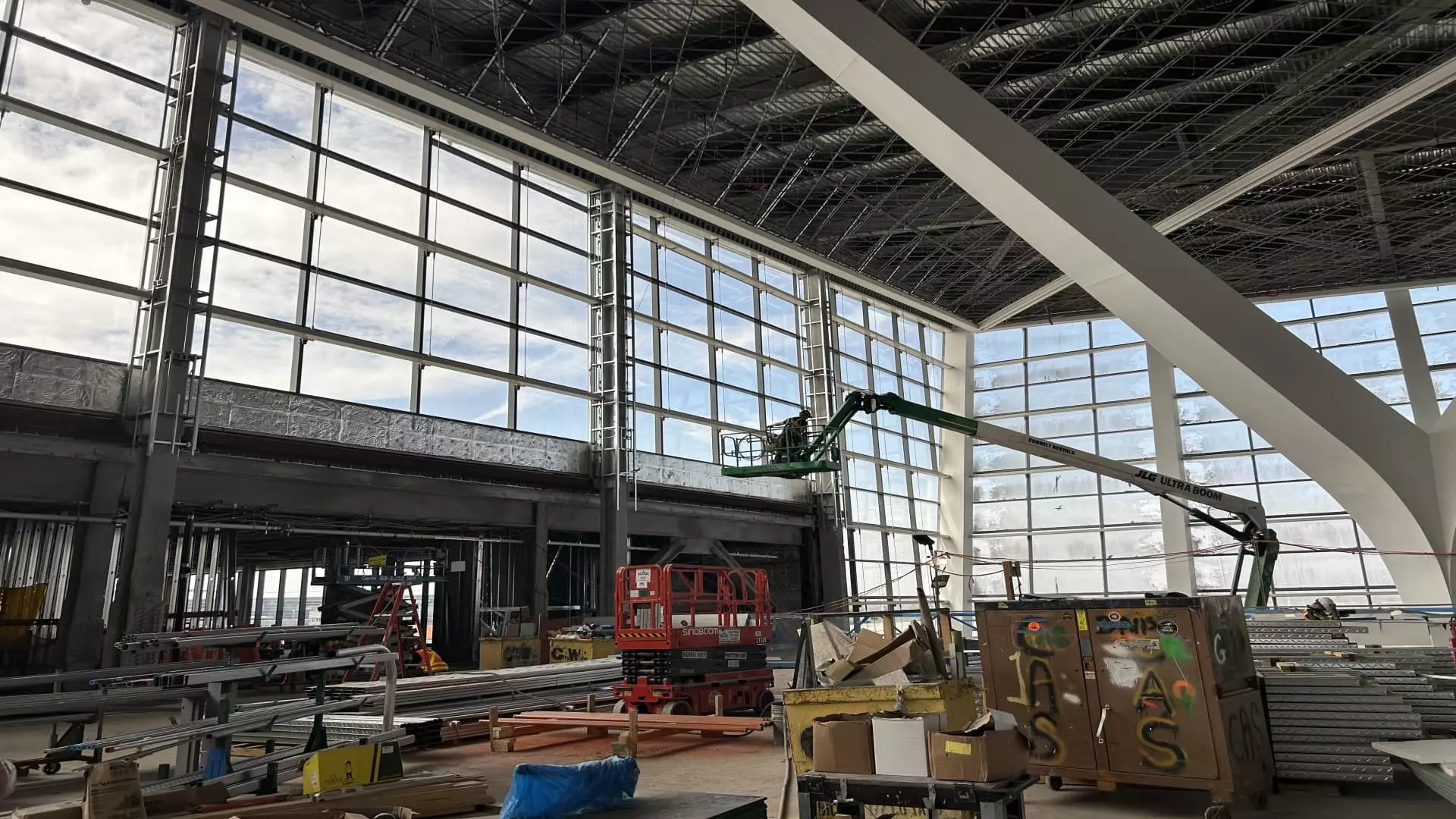The ongoing transformation of John F. Kennedy International Airport’s Terminal 1 is often portrayed as a monumental leap forward for American aviation. With a staggering price tag of $9.5 billion, the project promises to redefine international travel convenience and elevate JFK to global standards. Yet, beneath the glossy press releases and grand architectural visuals lies a sobering reality: this expansion, like many other infrastructure megaprojects, risks becoming an overly ambitious vanity project that prioritizes form over true functionality. It is a classic example of focusing on impressive visuals—winding conveyor belts, butterfly-shaped design, vast retail spaces—while potentially neglecting the fundamental issues plaguing American airports, such as operational efficiency, affordability, and accessibility.
The sheer scale of Terminal 1, projected to be larger than the combined size of the two new LaGuardia terminals, suggests a lust for grandeur. Its dedication solely to international travelers indicates an intent to craft an exclusive, almost elitist, experience. But does more space necessarily equate to better service? Historically, airports built with a focus on size and aesthetics often overlook the core needs of travelers: affordability, ease of navigation, and reliability. Smaller, well-managed terminals might serve travelers more efficiently than sprawling complexes designed to impress on paper but bogged down by bureaucratic complexity.
Design as a Distraction from Real Challenges
Architectural innovation, such as the butterfly-inspired layout and expansive natural lighting, captures headlines but risks obscuring the gritty, less glamorous realities of airport management. A vibrant, light-filled terminal is indeed a visual triumph; however, airport operations are rooted in logistics, staffing, and technological efficiency. The promise of no basement customs lines and centralized security on the same level sounds ideal but depends on decades of operational competence, which American airports have historically struggled with.
Furthermore, the project’s emphasis on aesthetics reveals a reluctance to confront pressing issues like congestion, aging infrastructure, and rising operational costs. While the new terminal may look spectacular, the core problem—airports as bottlenecks that frustrate travelers—remains largely unaddressed. The effective integration of security, customs, and baggage handling in a seamless, rapid-flow environment is still a distant goal despite these investments. And all this is set against the backdrop of national underinvestment in airport infrastructure, with U.S. airports needing hundreds of billions of dollars to keep pace with growth—not just in New York but across the country.
Economic and Political Oversight: Just Warping the System
The massive financial commitment, nearly double LaGuardia’s $8 billion upgrade and part of a broader $19 billion overhaul for JFK, underscores a complacent acceptance that bigger investments equal better outcomes. But in reality, these projects often become political playgrounds, where cost overruns, delays, and misallocations diminish the intended benefits. The project’s timing—scheduled to open just before the 2026 World Cup—is no coincidence; it seems designed to showcase American competitiveness on a global stage rather than to systematically improve traveler experience.
From a policy perspective, the focus on replacing and expanding infrastructure at elite hubs like JFK often neglects smaller, more congested airports that serve a broader portion of the population. A center-right legislative stance might argue that government spending should prioritize efficiency, decentralization, and maintenance rather than monumental monuments to progress. The question remains: is this a genuine investment in American infrastructure, or a spectacle that perpetuates a sense of grandeur while sidestepping deeper systemic reforms?
Market Realities and the Future of Travel
Perhaps the most critical flaw in the narrative is the assumption that the demand for international travel will continue to grow unabated. The aviation industry faces seismic shifts—rising fuel costs, geopolitical tensions, environmental concerns, and changing traveler behaviors. If these factors lead to a decline in international travel volume or a shift towards more sustainable alternatives, the colossal scale of Terminal 1 might become a white elephant.
Moreover, the focus on creating an experience that caters to high-paying international travelers risks alienating the average passenger. With retail spaces exceeding 300,000 square feet and an emphasis on duty-free shopping—an experience largely irrelevant to budget travelers—there’s a growing disconnect between the project’s ambitions and the diversity of airport users. The “cash-and-carry duty-free” concept may sound innovative, but it exemplifies a misguided attempt to monetize luxury on the backs of a broad traveling public, many of whom are simply seeking basic transportation.
While proponents shout about JFK’s new Terminal 1 as a symbol of progress, it more accurately reflects an industry obsessed with spectacle at the expense of substance. The project is emblematic of a broader trend—massive investments in flashy infrastructure that promises to make headlines but often fails to resolve the everyday frustrations faced by travelers and airport staff alike. For all its grandeur and ambitious design elements, JFK’s latest expansion risks being yet another expensive, inefficient showcase that diverts attention from the critical need for smarter, more sustainable, and truly user-centered airport development. Until policymakers prioritize operational integrity over architectural showmanship, these projects will remain hollow symbols of progress—fools’ gold in a landscape desperate for genuine reform.

